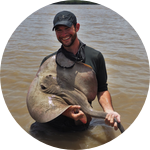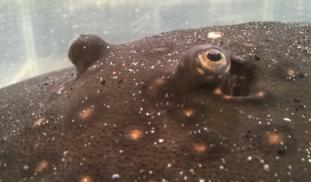Please wait...
About This Project
I'm interested in how stingrays, with jaws made of cartilage, consume tough or stiff prey like insects, crabs, and mollusks. I use high-speed videography and measure bite forces to analyze how rays use their jaws to eat tough prey. These freshwater rays invaded South America 30+ million years ago and diversified to feed on a variety of prey. How does feeding specialization evolve and what does it look like?

Browse Other Projects on Experiment
Related Projects
Open technologies for the identification of local fungi for decentralized biofabrication
The use of Open Scientific Hardware and locally produced reagents would enable biomaterial-focused citizen...
Leveraging understudied spider species to uncover novel biology
Over $1.425B has been invested into spider silk companies, yet less than 20 annotated spider genomes are...
Laser directed infrared spectroscopy to analyze microplastics down to 20 microns and speed up data analysis
Microplastic analysis is a very time-consuming procedure while smaller-sized plastics (<300 microns...




